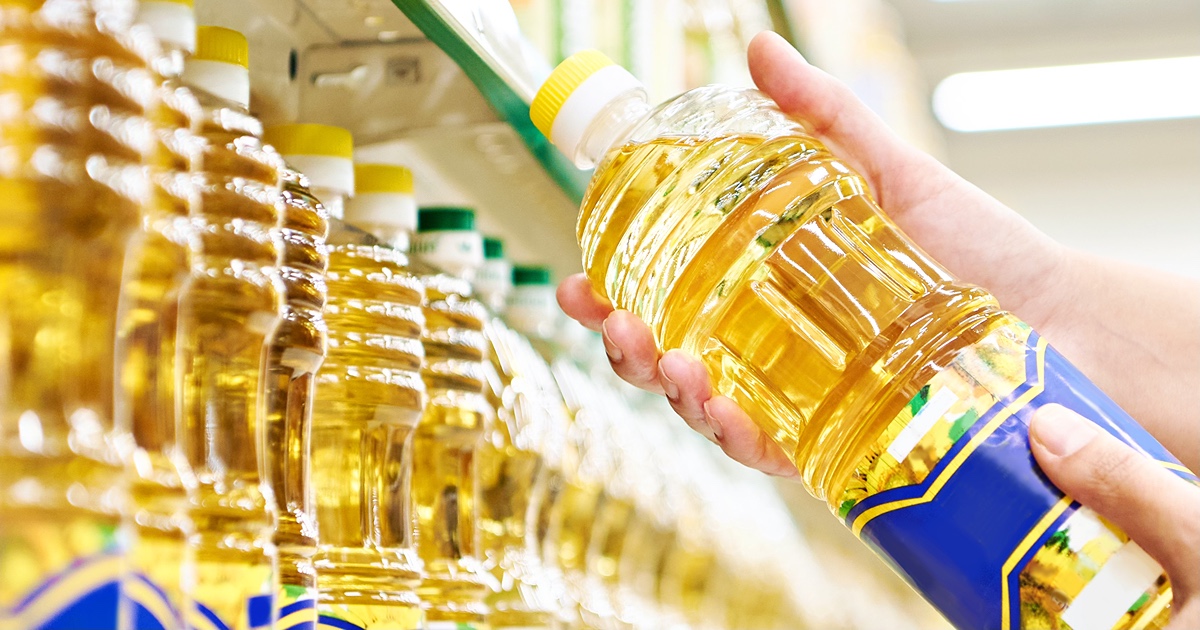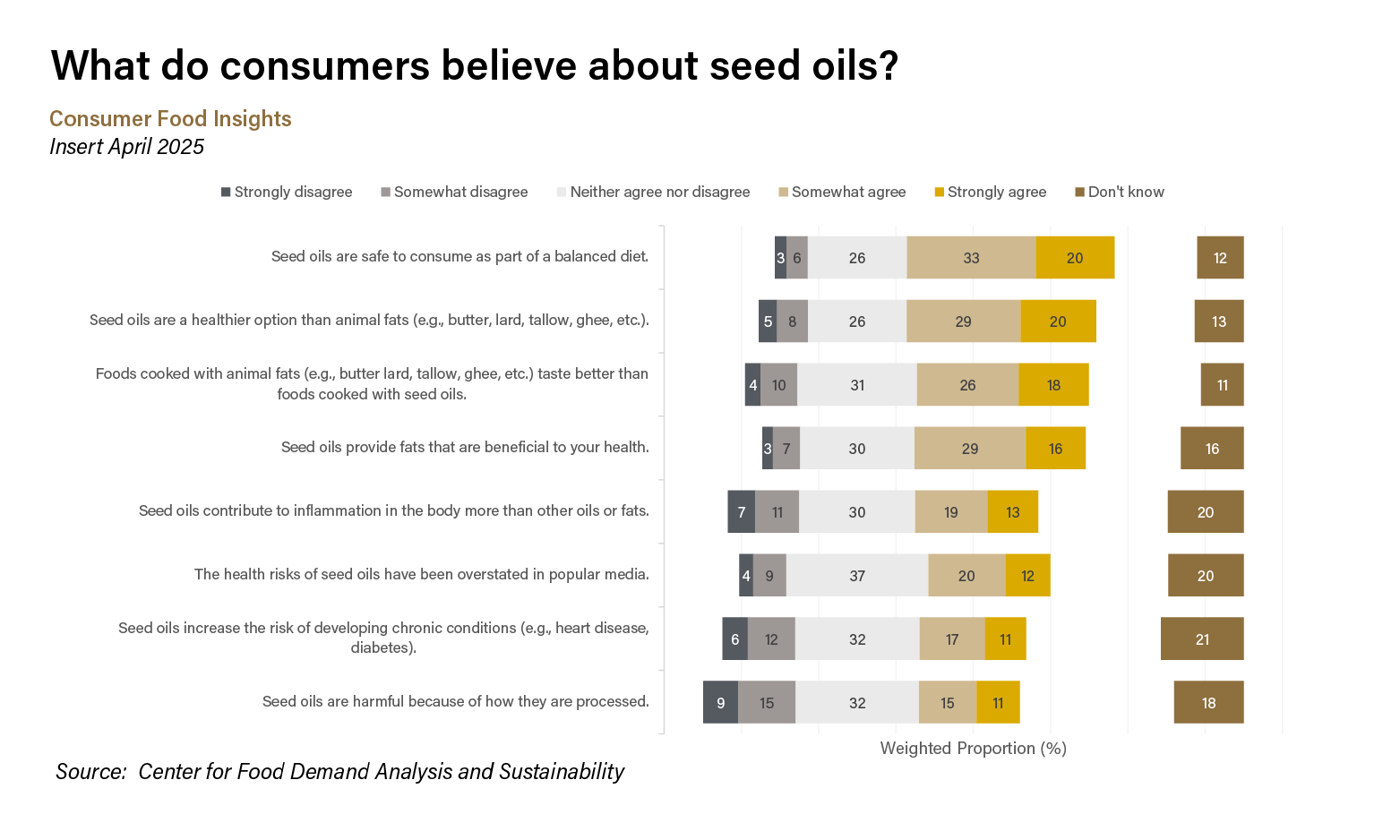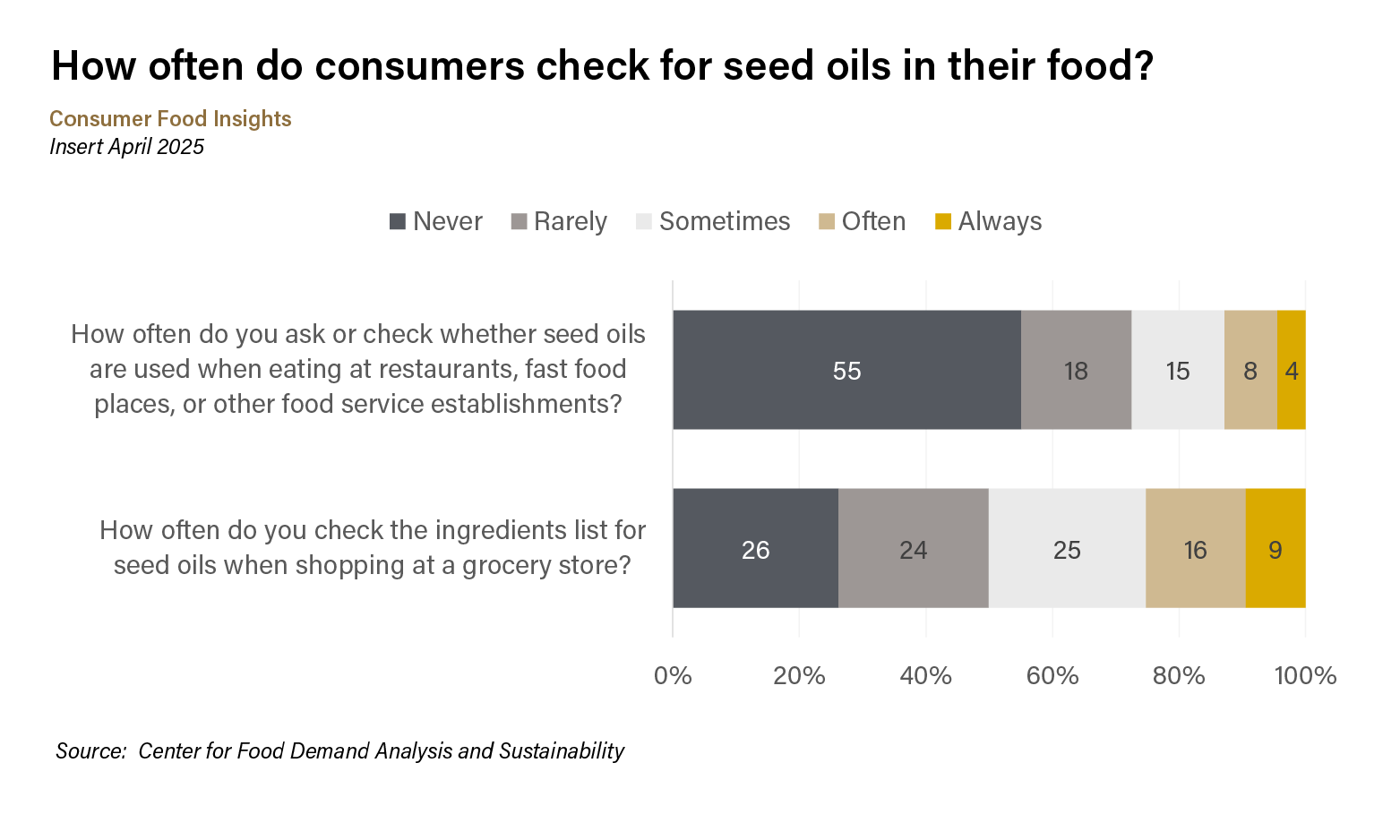Majority of consumers perceive seed oils as safe, but health concerns rise
WEST LAFAYETTE, Ind. — Most consumers are somewhat familiar with seed oils, but overall, they feel unsure or neutral about common claims regarding the link between the oils and negative health outcomes, according to the April Consumer Food Insights Report (CFI).
The survey-based report out of Purdue University’s Center for Food Demand Analysis and Sustainability (CFDAS) assesses food spending, consumer satisfaction and values, support of agricultural and food policies, and trust in information sources. Purdue experts conducted and evaluated the survey, which included 1,200 consumers across the U.S.
This edition examines consumer perceptions of seed oils, which have come under the media spotlight in recent months. Olive oil, butter, vegetable oil and canola oil are the most common oils and fats used by consumers. Vegetable and canola oil fall under the seed oil umbrella, which are oils extracted from plant seeds. They are commonly used in cooking, baking and food processing.
“Seed oils have long been a common cooking oil in American homes, because they’re relatively inexpensive, have desirable cooking properties and are a source of unsaturated fat,” said the report’s lead author, Joseph Balagtas, professor of agricultural economics at Purdue and director of CFDAS. “But they’ve come under scrutiny lately, especially in social media, with a message that they are unhealthy. Nutrition information can be confusing for consumers, so we set out to measure consumer perception around seed oils.”
Consumer perception of seed oils is generally positive or neutral, with 53% agreeing that seed oils are safe to consume and 45% saying seed oils are beneficial to health. But a minority (9%) say seed oils are unsafe to consume, and a third say seed oils contribute to inflammation in the body more than other fats.
“We’re detecting some confusion on the healthfulness of seed oils,” Balagtas said. “This is not totally surprising, since nutrition can be difficult and there’s a lot of conflicting information on what’s healthy and what’s not.”
The recent uptick in negative attention on seed oils might have some effect on consumer behavior. The researchers found that 20% of Americans are trying to avoid seed oils in cooking, up slightly from 18% a year ago.
The researchers also found that 55% of consumers are encountering information about seed oils on social media, more than any other information source. On average, consumers rank social media as less trustworthy than other sources of information and rank health care professionals as the most trustworthy. But Balagtas added that “the constant messaging of social media influencers could be drowning out more informed voices.”
“As market researchers interested in the consumer’s perspective, we will leave the health facts to the nutrition and food scientists,” said Elijah Bryant, a survey research analyst at CFDAS and a co-author of the report. “We are interested in what consumers believe to be true about seed oils.”
Last month the CFDAS researchers observed a nearly 1 percentage point jump in consumer expectations for future food prices. This comes as the year-over-year consumer price index measure of food inflation begins to rise again, reaching 3% after hovering around 2% for most of 2024.
“Consumers may be keying in on this change,” Bryant said. “Other reports also show increased pessimism about the economy and general inflation; this sentiment is similarly reflected in the increase in consumer expectations for food prices.”
The CFDAS researchers adapted the Cantril Scale of well-being to monitor consumer diet satisfaction. Overall, survey responses have shown little variation in diet well-being since the CFI’s inception in January 2022. Since then, around two-thirds of consumers have consistently rated their diet as 7 to 10 on a 0 to 10 scale, where 0 represents the worst possible diet and 10 represents the best.
One-fifth of respondents rate their diets 5 to 6. Only 12% rate their diets 0 to 4, or “suffering.” In the same vein, consumer happiness with their diets is high, with 85% being either “rather happy” or “very happy” with their diets. Regional differences are subtle, with around 70% of consumers in the West and Northeast regions rating their diets as 7 to 10 compared to around 65% to 66% of consumers from the South and Midwest, respectively.
“The U.S. food system has remained quite robust in the face of economic challenges in recent years and has been able to consistently satisfy a wide variety of American diets,” Bryant noted.
The CFI survey data agrees with U.S. Department of Agriculture data. “We find a higher rate of household food insecurity in the South region of the U.S. — 16.7% — compared to other regions,” he said. The food insecurity rate in the West (11.7%) and Northeast (11.9%) falls below the national average this month (12.8%).
“Of note, nearly half of all states within the South U.S. census region have poverty rates exceeding 15%,” Bryant said. “The link between income and food insecurity will become increasingly important if food inflation ramps up again and surpasses wage growth, which has remained above the food inflation rate since late 2023.”
The Center for Food Demand Analysis and Sustainability is part of Purdue’s Next Moves in agriculture and food systems and uses innovative data analysis shared through user-friendly platforms to improve the food system. In addition to the Consumer Food Insights Report, the center offers a portfolio of online dashboards.
About Purdue Agriculture
Purdue University’s College of Agriculture is one of the world’s leading colleges of agricultural, food, life and natural resource sciences. The college is committed to preparing students to make a difference in whatever careers they pursue; stretching the frontiers of science to discover solutions to some of our most pressing global, regional and local challenges; and, through Purdue Extension and other engagement programs, educating the people of Indiana, the nation and the world to improve their lives and livelihoods. To learn more about Purdue Agriculture, visit this site.
About Purdue University
Purdue University is a public research university leading with excellence at scale. Ranked among top 10 public universities in the United States, Purdue discovers, disseminates and deploys knowledge with a quality and at a scale second to none. More than 106,000 students study at Purdue across multiple campuses, locations and modalities, including more than 57,000 at our main campus locations in West Lafayette and Indianapolis. Committed to affordability and accessibility, Purdue’s main campus has frozen tuition 14 years in a row. See how Purdue never stops in the persistent pursuit of the next giant leap — including its integrated, comprehensive Indianapolis urban expansion; the Mitch Daniels School of Business; Purdue Computes; and the One Health initiative — at https://www.purdue.edu/president/strategic-initiatives.
Writer: Steve Koppes
Media contact: Devyn Ashlea Raver, draver@purdue.edu
Sources: Joseph Balagtas, balagtas@purdue.edu; Elijah Bryant; ehbryant@purdue.edu
Agricultural Communications: Maureen Manier, mmanier@purdue.edu, 765-494-8415
Journalist Assets: Publication quality charts and images can be obtained at this link






